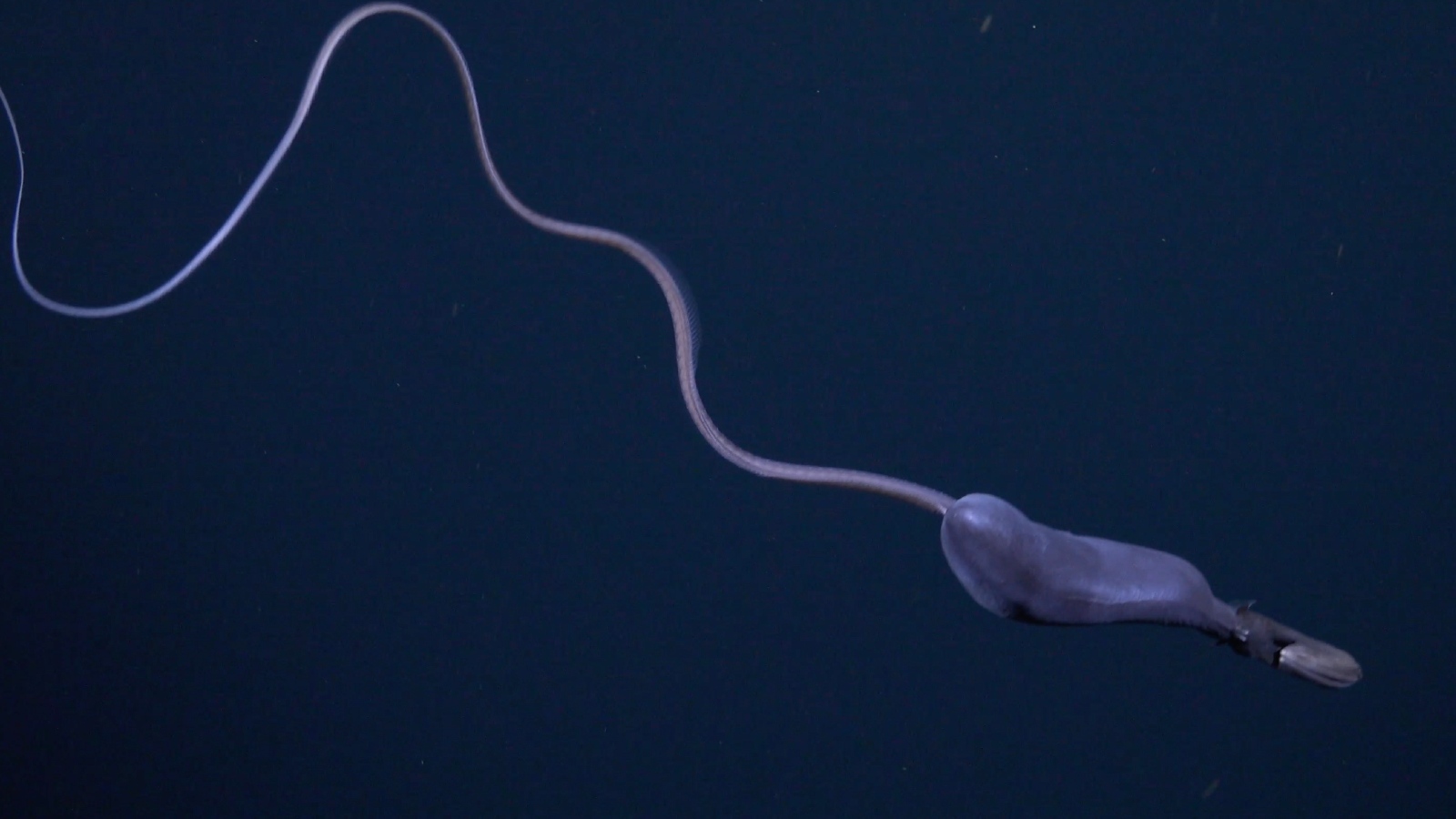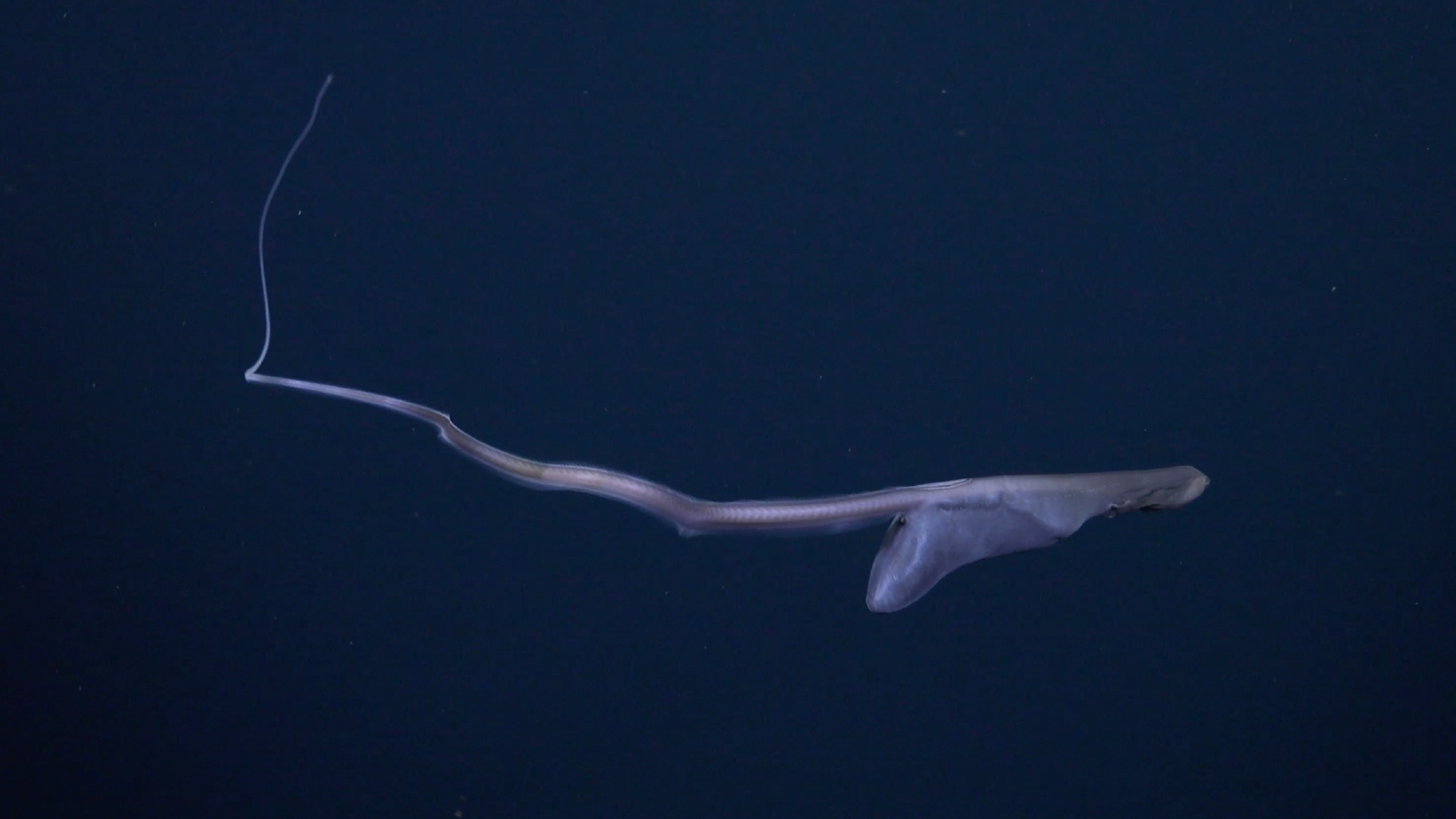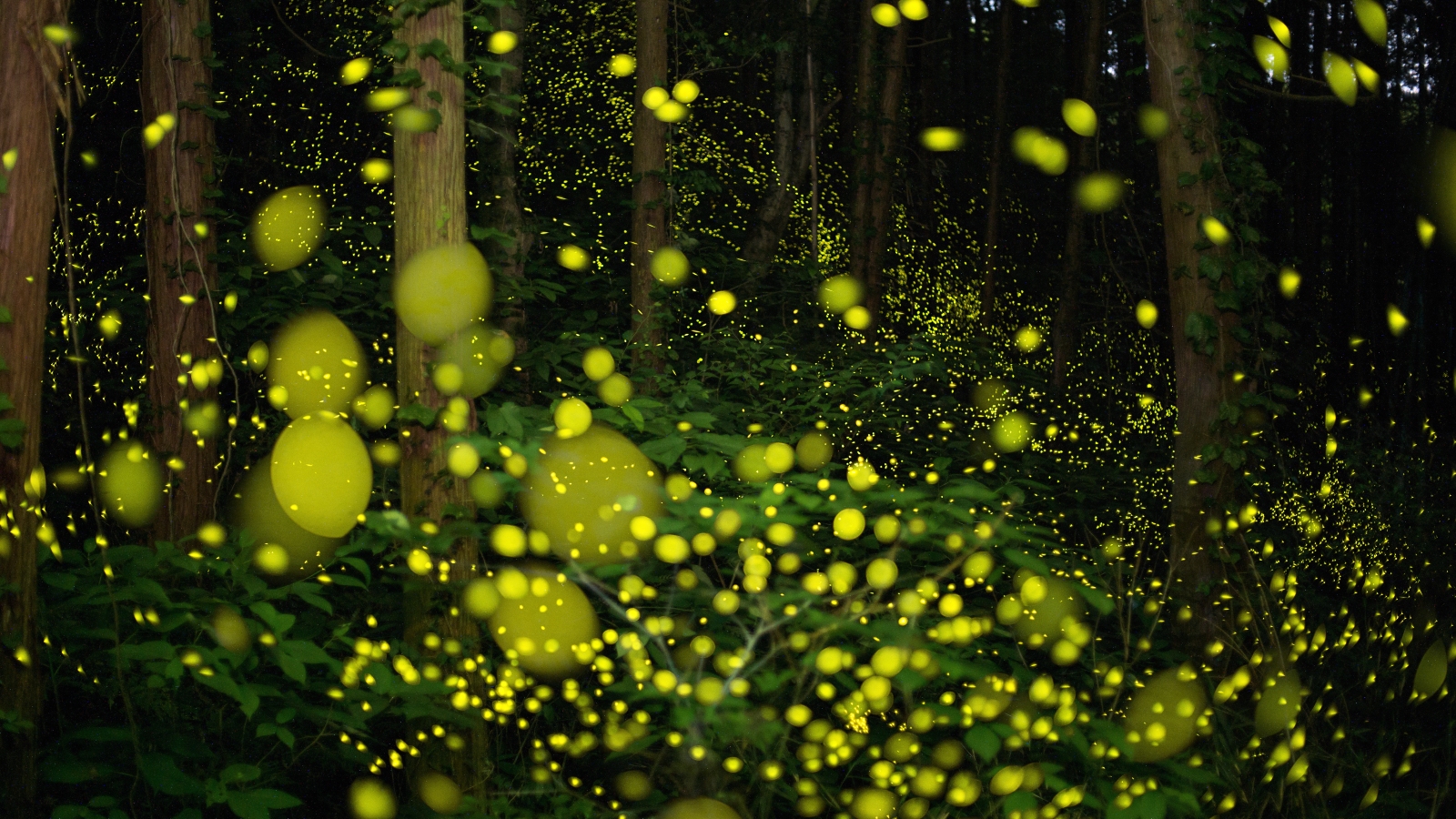Watch rare footage of a shapeshifting eel with 'remarkably full tummy' swimming in the deep sea
The slender "gulper eel" can unhinge its jaw and expand its throat, enabling it to eat squid-sized prey in a single gulp.
Ocean explorers recently stumbled upon an extremely unusual sight in the Pacific's deep sea — a rare, shapeshifting "gulper eel" with its most recent meal still clearly visible in its stomach.
The pelican eel (Eurypharynx pelecanoides), also known as a gulper eel, was spotted June 20 by researchers on board the Research Vessel (RV) Falkor while controlling the remotely operated vehicle (ROV) SuBastian. The ROV was on the last dive of the Octopus Odyssey expedition — a mission to investigate an unusually large group of octopuses at the Dorado Outcrop off the west coast of Costa Rica — when it came across the serpent-like fish with a noticeable lump in its midsection around 6,900 feet (2,100 meters) below the surface.
A short video of the encounter, which was shared on Twitter by representatives from Schmidt Ocean Institute who organized the mission, showed the eel contorting its misshapen body as it swam up to the camera before disappearing into the darkness of the deep.
The elusive eel, which has only been spotted a handful of times in the wild, gets its name for its ability to unhinge its jaw and expand its throat like a pelican. It also has one of the most stretchy mouths in the animal kingdom. Experts thought that this uncanny ability likely enables it to consume much larger meals than its slim body would suggest it capable of but until now, nobody has reported seeing one with a belly full of food.
Related: 10 bizarre deep sea creatures found in 2022
"In all our combined years of exploring the deep ocean, this was the first gulper eel for all of us," said mission scientist Diva Amon, a Caribbean marine biologist who was inside the ROV control room when the gulper eel was found. "And to see it with a remarkably full tummy was the icing on the cake." It is the sort of thing that you can normally only see in textbooks, she told Live Science in an email.
Experts aren't sure what was inside the belly of the gulper eel, but SOI representatives guessed that it could have been a "squid or swarm of shrimp," and based on the size and shape of the lump, a squid seems like the most likely of the two. But gulper eels are also suspected to eat large lumps of seaweed, according to the Woods Hole Oceanographic Institute (WHOI) in Massachusetts.
Get the world’s most fascinating discoveries delivered straight to your inbox.




Gulper eels are not particularly skilled hunters or swimmers. Instead, they use bioluminescence to produce a red light at the end of their tails that lure their prey in close enough to be swallowed whole, according to WHOI.
There is also evidence to suggest that gulper eels can use their remarkable jaw mechanism to help inflate their flexible bodies with water to intimidate potential predators into thinking they are larger than they actually are.
In 2018, researchers on board the Ocean Exploration Trust's Exploration Vessel (EV) Nautilus came across a ballooned gulper eel while exploring the Papahānaumokuākea Marine National Monument near Hawaii with another ROV. In a viral video of the encounter, the team watched the eel transform from a giant ball with a tail into a regular-shaped eel after extending and then closing its remarkably flexible jaw.

Harry is a U.K.-based senior staff writer at Live Science. He studied marine biology at the University of Exeter before training to become a journalist. He covers a wide range of topics including space exploration, planetary science, space weather, climate change, animal behavior and paleontology. His recent work on the solar maximum won "best space submission" at the 2024 Aerospace Media Awards and was shortlisted in the "top scoop" category at the NCTJ Awards for Excellence in 2023. He also writes Live Science's weekly Earth from space series.




